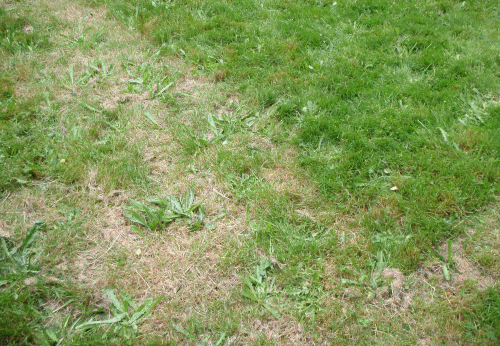




JulieBE




.




Idle dreamer





Brenda
Bloom where you are planted.
http://restfultrailsfoodforestgarden.blogspot.com/




JulieBE




 ) flowers BEFORE you get rid of all of them, because as Brenda points out, they are important habitat for beneficial insects.
) flowers BEFORE you get rid of all of them, because as Brenda points out, they are important habitat for beneficial insects. 

Idle dreamer




http://www.carrotmuseum.co.uk/queen.html
The Wild Carrot (Daucus Carota) or Queen Annes Lace is one of many umbelliferous plants to be found growing around the world. Although the species name for this ferny plant with the elegant, white lacy flowers is "Daucus carota", the same one used for cultivated carrots it is not the same plant. As a member of the carrot family it has a long taproot and lacy leaves. Dig up and crush a Wild Carrot root and you will find that it smells just like a carrot.
Wild Carrot is also known as Queen Anne's Lace, Birds Nest Weed, Bees Nest, Devils Plague, garden carrot, Bird's Nest Root, Fools Parsley, Lace Flower, Rantipole, Herbe a dinde and Yarkuki. Herbe a dinde derives from its use as a feed for young turkeys-dinde.
"Daucus" comes from daukos, name given by the Greeks to some members of the the Umbelliferae family and it seems to derive from "daîo" : I overheat . Carota means carrot in Latin.
The wild carrot is an aromatic herb that acts as a diuretic, soothes the digestive tract and stimulates the uterus. A wonderfully cleansing medicine, it supports the liver, stimulates the flow of urine and the removal of waste by the kidneys. An infusion is used in the treatment of various complaints including digestive disorders, kidney and bladder diseases and in the treatment of dropsy.
An infusion of the leaves has been used to counter cystitis and kidney stone formation, and to diminish stones that have already formed. Carrot leaves contain significant amounts of porphyrins, which stimulate the pituitary gland and lead to the release of increased levels of sex hormones.
The plant is harvested in July and dried for later use. A warm water infusion of the flowers has been used in the treatment of diabetes. The grated raw root, especially of the cultivated forms, is used as a remedy for threadworms. The root is also used to encourage delayed menstruation.
The root of the wild plant can induce uterine contractions and so should not be used by pregnant women. A tea made from the roots is diuretic and has been used in the treatment of urinary stones.
An infusion is used in the treatment of oedema, flatulent indigestion and menstrual problems. The seed is a traditional 'morning after' contraceptive and there is some evidence to uphold this belief. It requires further investigation. Carrot seeds can be abortifacient and so should not be used by pregnant women.
Ancient folk lore said that to cure epileptic seizures you should eat the dark coloured middle flower of Queen Annes Lace. The flower is also used in ancient rituals an spells, for women to increase fertility and for men to increase potency and sexual desire!














Brenda Groth wrote:
you should leave them, they are an umbel flower and they are the host to various types of predatory insects that will kill the pest insects on your property..you wipe them out, the pests may just well wipe you out
.








Brenda
Bloom where you are planted.
http://restfultrailsfoodforestgarden.blogspot.com/





Lisa Allen MH (AstroHerbalist)
TimingMagic.com





|
Live large! ... but not you tiny ad:
6 Rocket Builds - 3d Plans - Free Heat Bundle
https://permies.com/t/193434/Rocket-Builds-Plans-Free-Heat
|


